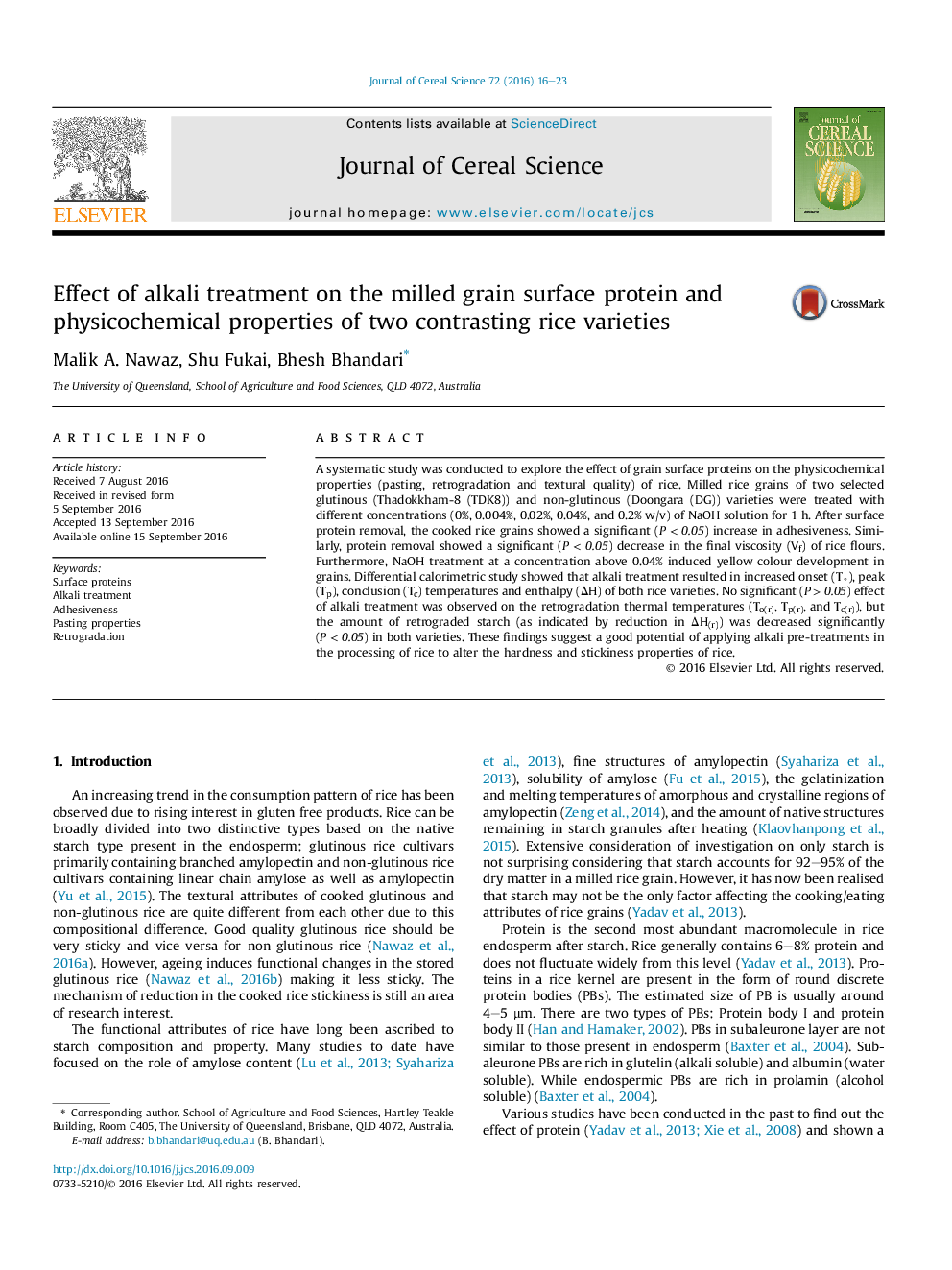| Article ID | Journal | Published Year | Pages | File Type |
|---|---|---|---|---|
| 4515451 | Journal of Cereal Science | 2016 | 8 Pages |
•Removal of surface proteins on rice grains by NaOH solution was revealed through CLS micrographs.•Significant (P < 0.05) increase in adhesiveness was found in alkali treated rice grains.•NaOH treatment at a concentration above 0.04% induced yellowness in grains.
A systematic study was conducted to explore the effect of grain surface proteins on the physicochemical properties (pasting, retrogradation and textural quality) of rice. Milled rice grains of two selected glutinous (Thadokkham-8 (TDK8)) and non-glutinous (Doongara (DG)) varieties were treated with different concentrations (0%, 0.004%, 0.02%, 0.04%, and 0.2% w/v) of NaOH solution for 1 h. After surface protein removal, the cooked rice grains showed a significant (P < 0.05) increase in adhesiveness. Similarly, protein removal showed a significant (P < 0.05) decrease in the final viscosity (Vf) of rice flours. Furthermore, NaOH treatment at a concentration above 0.04% induced yellow colour development in grains. Differential calorimetric study showed that alkali treatment resulted in increased onset (T∘), peak (Tp), conclusion (Tc) temperatures and enthalpy (ΔH) of both rice varieties. No significant (P > 0.05) effect of alkali treatment was observed on the retrogradation thermal temperatures (To(r), Tp(r), and Tc(r)), but the amount of retrograded starch (as indicated by reduction in ΔH(r)) was decreased significantly (P < 0.05) in both varieties. These findings suggest a good potential of applying alkali pre-treatments in the processing of rice to alter the hardness and stickiness properties of rice.
